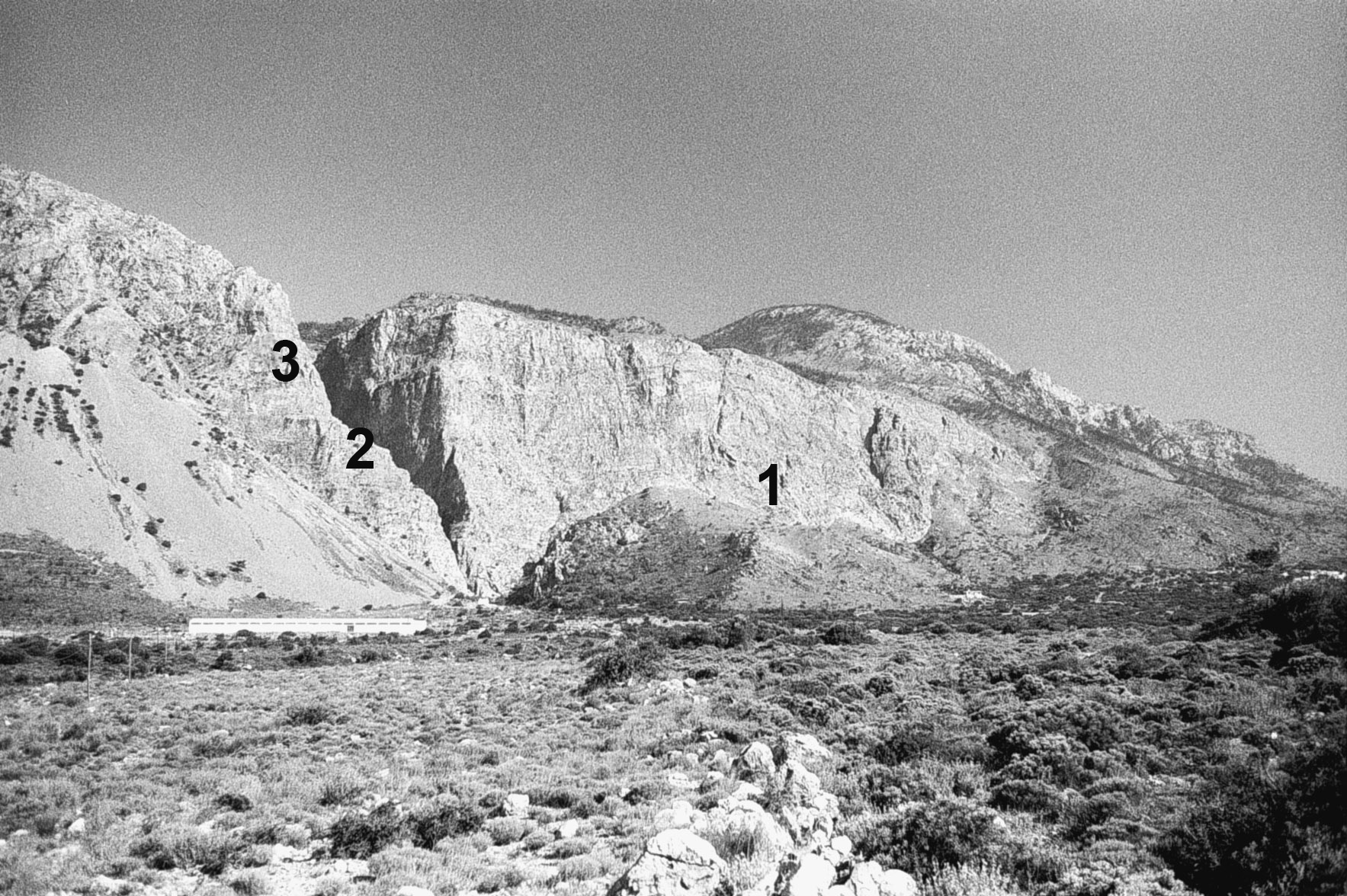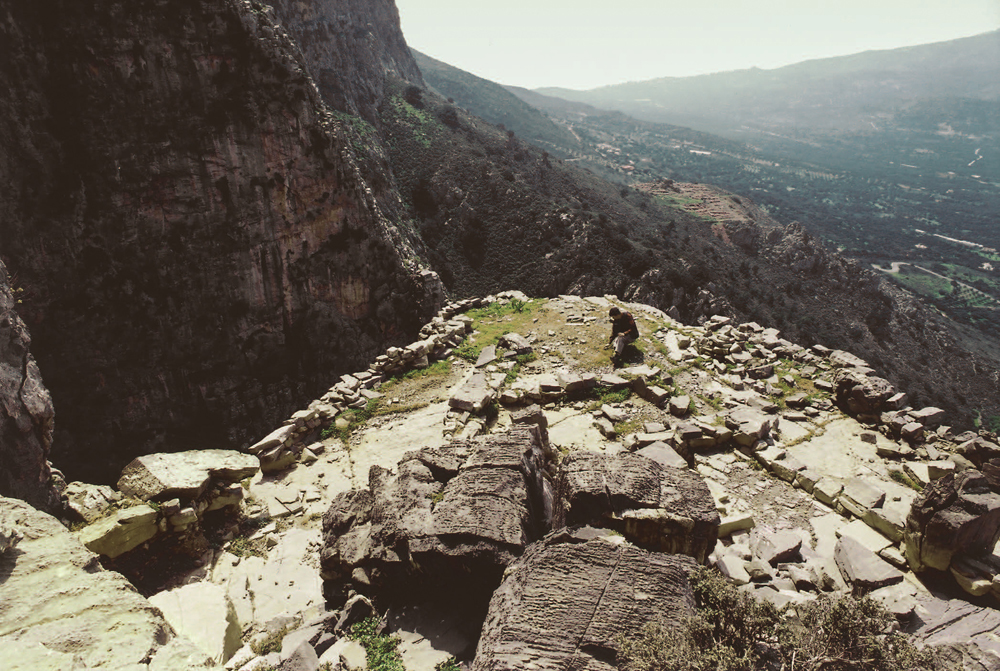
The site of Katalimata is located on multiple terraces within the Cha Gorge (near the village of Monastiraki) and approximately halfway up its northern side. The site had been known to archaeologists since at least 1903 when Harriet Boyd observed its walls with a spyglass. Katalimata was surveyed in 1989 and 1990 by Donald Haggis and Krzysztof Nowicki, and excavations were conducted by Nowicki over five seasons (between 1993 and 2000) as part of the Chalasmenos Project (a synergasia of the ASCSA and the Hellenic Ministry of Culture, under the direction of Metaxia Tsipopoulou and William D.E. Coulson).
The site served as a “refuge” settlement in various periods of instability, and it shows evidence of six separate occupation phases: Final Neolithic (ca. 3500 B.C.), Middle Minoan (MM) II (ca. 1700 B.C.), Late Minoan (LM) IB–IIIA:1 (ca. 1450–1400 B.C.), Late Minoan IIIC (ca. 1200–1150 B.C.), Early Byzantine (late 7th c. A.D.), and Late Venetian (16–17th c. A.D.). The best preserved (longest and most intensive) occupation at the site dates to the LM IIIC period, and it predates slightly the nearby settlement of Chalasmenos. Excavation was limited at Katalimata and concentrated in the area of Terrace C, which supported the best preserved structure, Building C.



This building represents a probable LM IIIC house of five to seven rooms, and it appears to have been the most important structure in the settlement at that time. The LM IIIC settlement itself can be reconstructed as containing approximately twelve houses. Less well preserved was the evidence for the important MM II phase “fortress-settlement” at the site, which was apparently well-organized and included substantial structures, such as houses, guardhouses, passages between buildings, and defensive walls; some elements of Building C also date to this period.
Although unguarded and unfenced, there are no signs to the site, which is nearly inaccessible, and it is dangerous to attempt to visit without a guide.
Selected References
Haggis, D.C., and K. Nowicki. 1993. “Khalasmeno and Katalimata. Two Early Iron Age Settlements in Monastiraki, East Crete,” Hesperia 62, pp. 303–337. DOI: 10.2307/148197.
Nowicki, K. 2000. “Monastiraki Katalimata,” in Defensible Sites in Crete c. 1200 – 800 B.C. (LM IIIB/IIIC through Early Geometric) (Aegaeum 21), Liège, Austin, pp. 92–97.
———. 2008. Monastiraki Katalimata: Excavation of a Cretan Refuge Site, 1993–2000 (Prehistory Monographs 24), Philadelphia.
